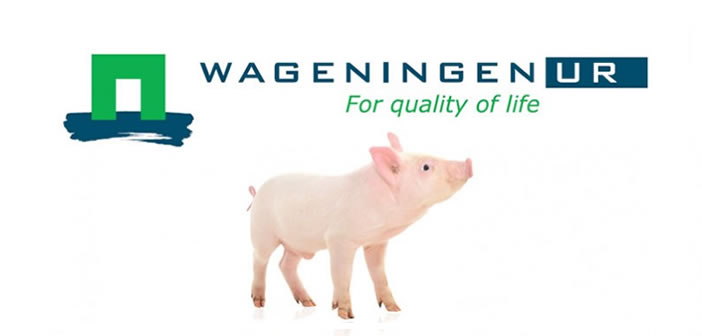Researchers at the Swine Innovation Centre Sterksel (SIC) in the Netherlands have issued practical guidelines for producers concerning the need to ensure stock have appropriate eating and drinking places at each stage of growth.
Basing their comments on “experiences and results of various projects”, the team at SIC, which is part of Wageningen University, advise the following:
“For piglets, within the first three to four days after weaning, feed and water intake of piglets plays an important roll concerning whether or not digestive problems occur. It is recommended, therefore, that producers create more eating and drinking places during this time then is needed later on, placing open feeding and drinking bowls around the pen.
“The specific advice is:
one eating place for a maximum of two piglets,
one drinking place for approximately five piglets.
“From four days after weaning until movement to the finishers stage (approximately 25 kg), the specific advice is:
one eating place for approximately five piglets,
one drinking place for a maximum of 10 piglets, with nipple yield at least 500 ml per minute.
“For finishing pigs, the specific advice is:
one eating place for a maximum of eight finishers,
one drinking place for a maximum of 10 finishers, with nipple yield at least 800 ml per minute.
“In addition to offering the right number of food and drinking places, it is also important to ensure the effective use of these drinking and eating places. For example, providing two drinking cups, of which one is used and the other isn’t, is not effective.
“When two feeding trays are too far apart, the situation frequently arises where one feeding trough is preferred. Near this tray, displacement between animals can occur, while the other bin is entirely available but is not used.
“Specific advice regarding situating eating and drinking places:
Locate drinking points above a slatted flour, with a maximum distance of 50 to 60 cm between the drinking points. Do not put the drinking points in a corner.
Locate two eating places within a maximum of 50 to 60 cm of each other.”
The team also commented on common limiting factors in determining the number of pigs per feeding trough and the total time that pigs spend on eating and drinking.
“This depends on feed intake and the rate of eating,” they said. “Eating behaviour is also influenced by the age of the animal. With ageing, the time spent on eating decreases and the intake of meals per day reduces. This means that the maximum number of pigs per trough decreases as the pigs get older.
“For weaners, the total number of visits per day to the dry feeding trough is around 30, while the number of visits with feed intake is approximately 10 to 12 per day. The eating rate is about 3 to 4 grams per minute for the young piglets and 6 to 7 grams per minute for the older piglets.
“For finishing pigs, the number of visits with feed intake is approximately 8 to 12 times per day. The eating rate is approximately 40 grams per minute.”




